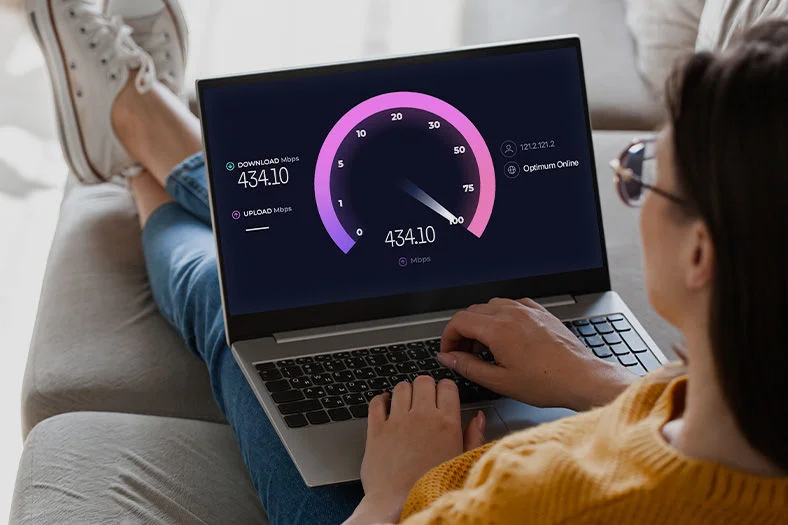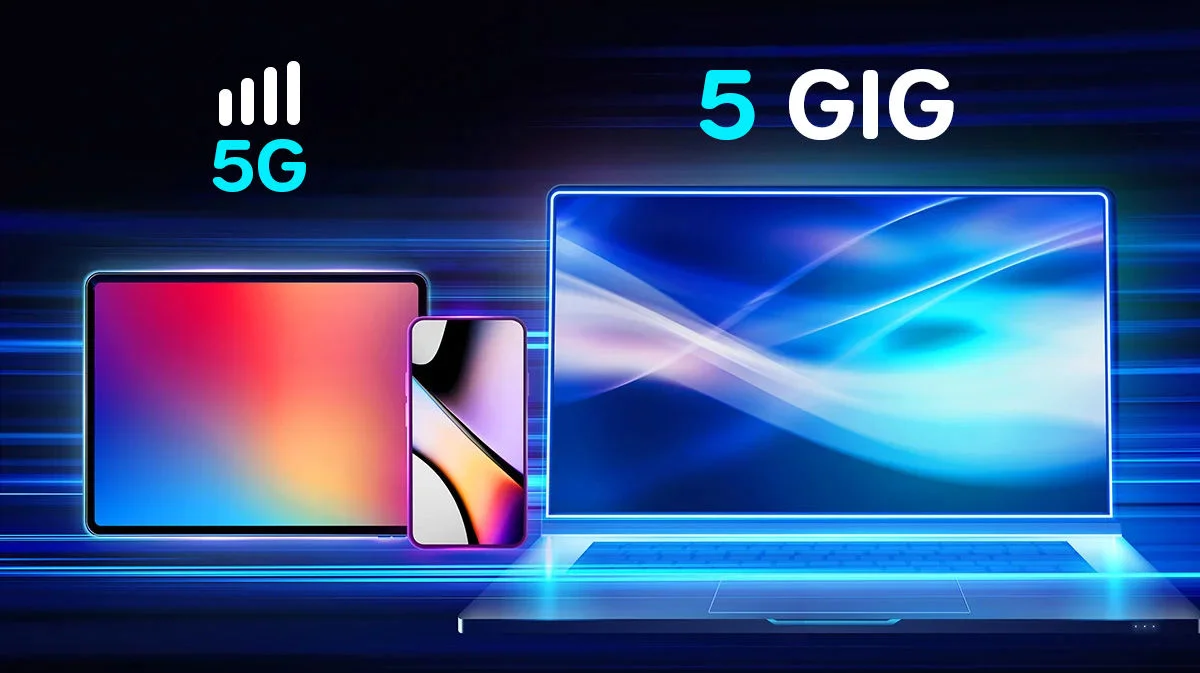How to Get Affordable Internet
By: Vincent Totino
Read Time: 6 min.
July 10, 2025
Whether for work, school, healthcare, communicating with loved ones, or making purchases, many of us use the Internet daily, if not several times per day. It’s an essential service—but it can be difficult to maintain a reliable Internet connection while on a budget.
How much Internet service costs may vary depending on your Internet Service Provider (ISP) and chosen plan, but most households can expect to pay between $40 and $100 per month. The good news is, if you’re on a tight budget, you have options to lower your monthly bill. Here, we’ll also introduce you to Optimum’s affordable Internet options and explain how they work.

How to Get Affordable Internet at Home
How Can I Save Money on My Home Internet Bill?
If you are looking to cut down your monthly Internet costs, there are several smart ways to save on your home Internet bill. Whether it’s by bundling services, switching providers, or adjusting your plan, take the time to consider how your Internet service can better match your needs. Let’s explore five of the most common options available for you below.
Bundle Services
Bundling your Internet with other services, like mobile phone plans, can often lead to significant monthly savings and added convenience. For example, with Optimum Bundles, you can combine all your essential services into one convenient package and save money while you're at it! Instead of subscribing to each service individually, bundling Optimum’s services lets you say goodbye to multiple bills and consolidate them into one monthly bill.
Buy Your Own Modem and Router
Buying your own modem and router can save you money over time by eliminating monthly equipment rental fees charged by Internet providers. These fees typically range from $10 to $15 per month, which adds up to $120 to $180 per year.
In contrast, purchasing a quality modem and router can cost around $100 to $200 total, meaning you could break even in as little as 12 to 18 months. After that, you get Internet access without paying extra for equipment. Just make sure the devices you buy are compatible with your Internet provider’s service.
Use a Mobile Hotspot
Using a mobile hotspot can reduce or even eliminate the need for home Internet, especially if your online activity is light, like browsing, streaming in standard definition, or checking email. A mobile hotspot turns your smartphone into a WiFi signal using your cellular data plan, allowing you to connect other devices like laptops or tablets.
Using a mobile hotspot is great for temporary or light Internet use, but speeds and data limits depend on your phone plan, and excessive use can quickly burn through your data or slow your speeds due to throttling.
With Optimum’s Unlimited plans—starting at $30 per month per line—you get 5G access at no additional cost, plus unlimited talk, text, and data. This makes it easier to use your phone as a hotspot without worrying about running out of data too quickly.
Reduce Your Internet Speed
Reducing your Internet speed can be a simple way to lower your monthly bill, especially if you’re not using high-demand applications like online gaming or 4K streaming.
According to the FCC Household Broadband Guide, many households only need 3 to 8 Mbps for basic tasks like checking email, browsing, or streaming standard-definition video. Even with two or three devices, a medium-tier plan (12 to 25 Mbps) may be sufficient for most everyday needs.
If your current plan offers much higher speeds than you actually use, downgrading to a lower-tier plan could save you money without sacrificing performance. Assess how many people and devices use your Internet and match your speed to your actual usage.
Look for A New Internet Provider
Switching to a new Internet provider can be a great way to save money, especially since Internet service providers (ISPs) often offer promotional rates for new customers that are lower than what existing customers pay. Additionally, many providers now make it easy to switch, and some even offer contract buyouts to cover early termination fees from your current provider.
Pricing, speed tiers, and promotional deals and discounts can vary widely between ISPs, so it’s worth comparing offers in your area using tools like the FCC Broadband Map or local availability checkers.
Get Optimum Advantage Internet
How Can I Get Low-Cost Internet as a Senior?
More Ways to Save on Your Home Internet Bill
What Affordable Internet Plans Does Optimum Offer?
First things first: The Internet adoesn’t have to be expensive. Optimum has several affordable home Internet options designed to fit comfortably within a budget. The most affordable plan available to all is the Optimum 300 Mbps, which offers fast speeds, 24/7 support, and 99.9% reliability.* Plus, all of the necessary equipment is included at no additional cost to you.
Outside of this plan, we also offer Optimum Advantage and Optimum Advantage + plans
*99.9% reliability claim excludes outages caused by external events and scheduled maintenance.
Optimum Advantage Internet
Optimum Advantage Internet is a budget-friendly service offering fast, reliable Internet for qualifying households. For those who are eligible and sign up, you’ll get Internet with speeds of up to 50 Mbps—with no data caps. Plus, you’ll also get free installation and a free WiFi router. The service costs $14.99 per month, and you can cancel anytime.
Optimum Advantage+ has the same eligibility requirements but offers double the download speed for $25 per month.
You may be eligible if your household meets any one of the following criteria:
- Your household qualifies for or participates in the National School Lunch Program (NSLP)
- You are a New York City resident attending a New York City public school
- You are 65 years or older and are eligible for or receive Supplemental Security Income (SSI)
- You are a Veteran and receive state or federal public assistance
Lastly, Lifeline, which is administered by the FCC, is a federal program that provides a monthly discount of up to $9.25 on phone or Internet service for eligible low-income households. If you’ve been affected by a recent disaster, live on Tribal lands, or meet any of the other qualifying criteria, the program can help make essential communication services more affordable.
Frequently Asked Questions about Finding Affordable Internet
Which Wi-Fi network is the cheapest?
The cheapest Wi-Fi network depends on your location and eligibility for special programs. Options like Optimum Advantage Internet offer plans as low as $14.99 per month for 50 Mbps. Some mobile carriers also offer low-cost 5G home Internet starting around $25 to $50 per month. To find the cheapest option, compare providers in your area and look for discounts or bundled service deals.
How can I get free WiFi without paying?
You can access free WiFi without paying by connecting to public networks available at places like coffee shops, public libraries, airports, public schools, or community centers. Fast-food restaurants and retail chains are also some of the most common and accessible places for free WiFi. Some locations may require you to ask for a password, while others allow you to connect freely. Sometimes you can even connect from outside the building. Some cities also offer free municipal WiFi in parks or downtown areas.
What type of Internet connection is typically the cheapest?
Cable and DSL connections are typically among the cheapest types of Internet available, especially in areas where fiber has yet to be rolled out. DSL uses existing phone lines and can offer basic speeds at low monthly rates, while cable Internet is widely available and often comes with promotional pricing. While DSL is often the cheapest Internet option, it’s also one of the slowest, making it less ideal for activities like streaming, gaming, or working from home.
Does Optimum offer a senior discount?
Optimum doesn’t have any plans specific for seniors, but Optimum Advantage Internet may be an option if you are 65 years or older and receive Supplemental Security Income (SSI). Optimum Advantage offers an affordable Internet plan with 50 Mbps speeds for just $14.99 per month. The plan includes free installation and equipment at no extra cost, making it a budget-friendly choice for eligible households.
Are you getting everything you need from your home Internet?





